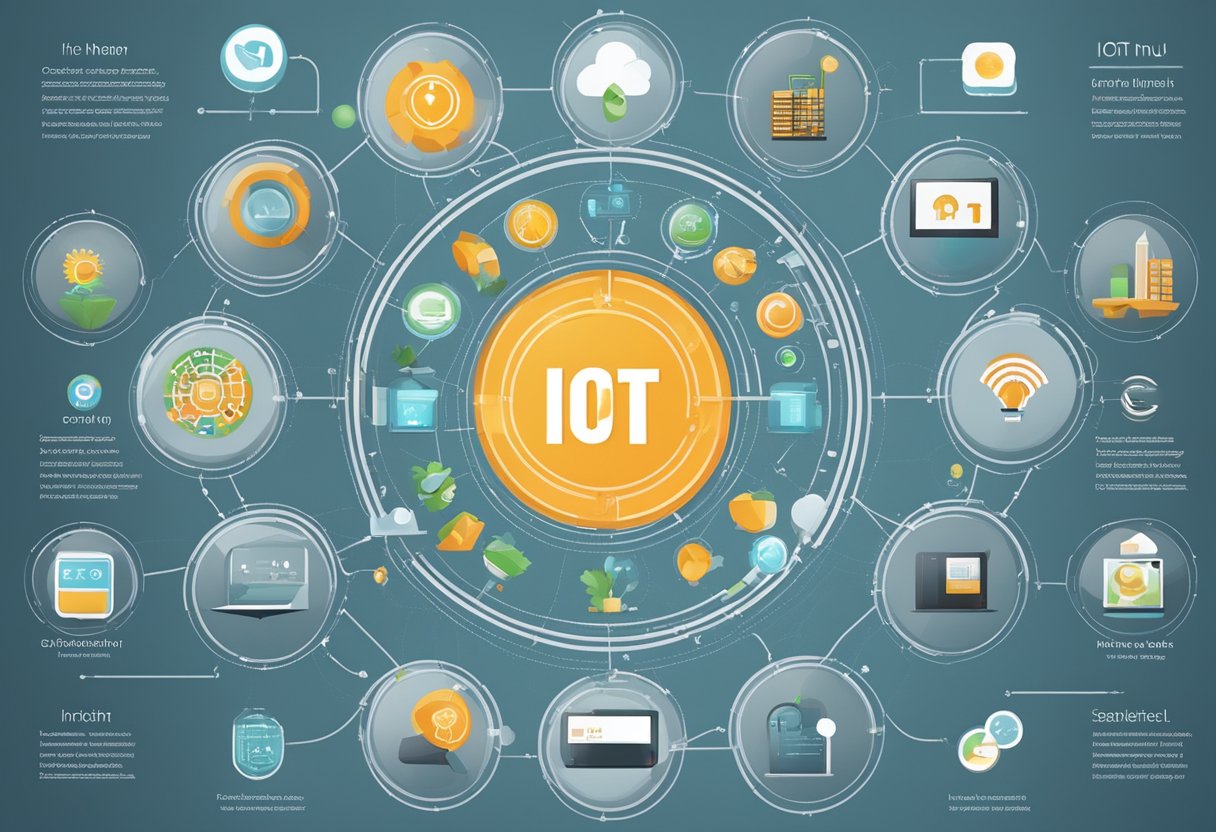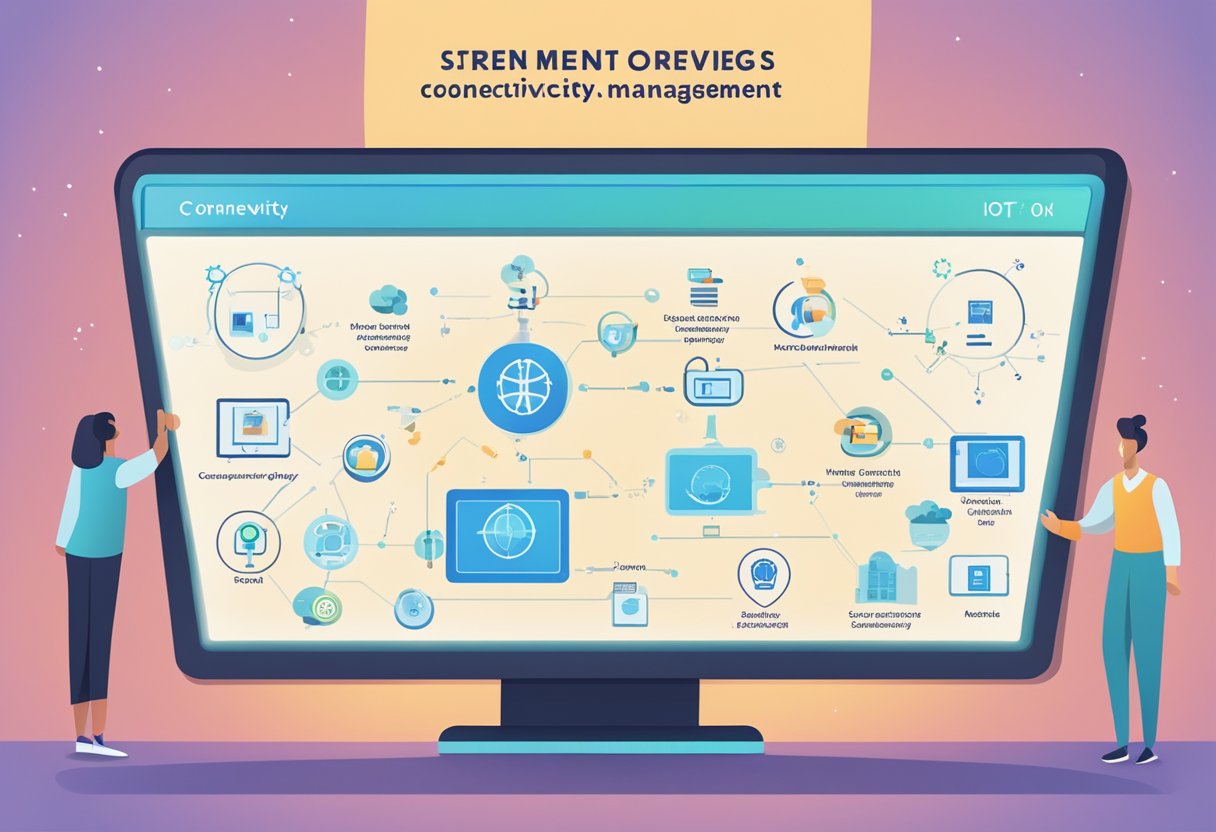IoT (Internet of Things) devices have become increasingly popular in recent years. They are designed to make our lives easier by automating tasks and providing us with real-time information. However, many of these devices come with hidden features that are not immediately apparent to the user. One such feature is the IoT hidden menu.
The IoT hidden menu is a set of advanced settings that are hidden from the user interface of IoT devices. These settings can be accessed by entering a specific code or sequence of codes into the device’s dial pad. Once accessed, the user can perform a variety of tasks, such as testing the device’s sensors, adjusting display settings, and updating firmware.
Key Takeaways
- IoT hidden menus are advanced settings that are not immediately apparent to the user.
- These menus can be accessed by entering a specific code or sequence of codes into the device’s dial pad.
- Once accessed, the user can perform a variety of tasks, such as testing sensors, adjusting display settings, and updating firmware.
Understanding IoT Hidden Menus

Definition and Purpose
IoT hidden menus are concealed sets of advanced settings and features within IoT devices. These settings are not readily visible or accessible to the average user but can offer enhanced control and functionality. The IoT hidden menu serves various purposes, such as testing and debugging, providing access to advanced features and settings, and unlocking hidden functionalities.
The hidden menu is designed to be accessed only by advanced users or technicians who understand the technical aspects of the device. The menu can be used to perform various tasks such as testing sensors, calibrating devices, and accessing advanced settings that are not available through the device’s standard interface.
Accessing IoT Hidden Menus
Accessing the IoT hidden menu can be done in several ways, depending on the device and the manufacturer. One way to access the hidden menu is through a specific code or sequence entered on the device’s keypad. Another way is through the device’s settings, where an unlock option can be found to access the hidden menu.
Certain IoT devices have hidden menus accessible through dedicated mobile apps. For instance, the IoT Hidden Menu App is a powerful tool that allows users to access and control the hidden menu settings of their IoT devices. These hidden menus hold a wealth of advanced features and settings that are not easily accessible to the average user.
It is important to note that accessing the IoT hidden menu can be risky and may void the device’s warranty. Therefore, it is recommended that users consult the device’s manual or contact the manufacturer’s customer support before attempting to access the hidden menu.
Security Implications

The IoT hidden menu can be a powerful tool for advanced customization and troubleshooting, but it also poses some security risks. In this section, we’ll explore the risks of unauthorized access and best practices for security.
Risks of Unauthorized Access
Unauthorized access to the IoT hidden menu can lead to unintended consequences, such as altering settings that can cause devices to malfunction or even brick. Additionally, some hidden menu options can be used to bypass security measures, leaving devices vulnerable to hacking attempts.
Furthermore, some hidden menu options may not be fully tested or supported by device manufacturers, which can lead to unpredictable behavior or even data loss. For example, a user who changes a setting in the hidden menu may unknowingly disable a critical security feature, putting their device and data at risk.
Best Practices for Security
To minimize the risks of unauthorized access to the IoT hidden menu, users should follow these best practices:
- Only access the hidden menu if necessary and with caution.
- Do not make changes to settings unless you fully understand their implications.
- Avoid using unauthorized methods to access the hidden menu, as this can void warranties and compromise device security.
- Keep devices up-to-date with the latest firmware updates, which may include security patches and bug fixes.
- Use strong and unique passwords to protect devices from hacking attempts.
- Regularly monitor devices for unusual activity or behavior, which may indicate a security breach.
Common Features in IoT Hidden Menus
IoT hidden menus are often overlooked by the average user, but they contain a wealth of advanced features and settings that can be useful for customizing and optimizing IoT devices. Here are some common features found in IoT hidden menus:
Diagnostic Tools
Diagnostic tools are a common feature found in IoT hidden menus. These tools can be used to troubleshoot issues with the device, such as connectivity problems or hardware malfunctions. The diagnostic tools can provide information about the device’s performance, including network signal strength, battery life, and memory usage. Some IoT devices also have self-diagnostic features that can automatically detect and fix issues.
Advanced Configuration Options
Advanced configuration options are another common feature found in IoT hidden menus. These options allow users to customize and optimize the device’s performance. For example, users can adjust the device’s power settings to conserve battery life or increase performance. They can also change network settings, such as the device’s IP address and DNS server. Some IoT devices also have advanced security settings that can be accessed through the hidden menu.
Troubleshooting IoT Devices

IoT devices can sometimes encounter issues that affect their performance. Troubleshooting these issues can be a daunting task, especially if the user does not have access to the right tools. Fortunately, hidden menus can provide a wealth of information that can help users diagnose and fix problems with their IoT devices.
Using Hidden Menus for Troubleshooting
Hidden menus can be accessed on most IoT devices, and they provide access to advanced settings and diagnostic tools that are not normally available to users. These tools can be used to troubleshoot a wide range of issues, including connectivity problems, performance issues, and software glitches.
One of the most common issues that users encounter with IoT devices is connectivity problems. Hidden menus can be used to diagnose these problems by providing information about the device’s network settings, signal strength, and other relevant data. Users can use this information to identify issues with their network and take steps to resolve them.
Performance issues are another common problem that users encounter with IoT devices. Hidden menus can be used to optimize the device’s performance by adjusting settings such as CPU speed, memory usage, and power consumption. Users can also use hidden menus to identify processes that are consuming too many resources and take steps to optimize them.
Finally, software glitches can also be a problem with IoT devices. Hidden menus can be used to diagnose these issues by providing access to diagnostic tools such as log files and error messages. Users can use this information to identify the cause of the problem and take steps to fix it.
Legal and Ethical Considerations

Compliance with Regulations
When it comes to IoT devices, there are many legal and regulatory considerations to keep in mind. The use of hidden menus in IoT devices can raise concerns about compliance with regulations. For example, in the United States, the Federal Trade Commission (FTC) has issued guidelines for IoT devices, which include requirements for transparency and security. Companies that use hidden menus in their IoT devices must ensure that they are complying with these guidelines. Failure to comply with regulations can result in legal action, which can be costly for companies.
Ethical Use of Hidden Menus
In addition to legal considerations, there are also ethical considerations to keep in mind when it comes to hidden menus in IoT devices. Hidden menus can be used for a variety of purposes, some of which may be unethical. For example, hidden menus can be used to collect data about users without their knowledge or consent. This can be a serious violation of privacy, and can lead to legal and ethical concerns.
Companies that use hidden menus in their IoT devices must ensure that they are using them ethically. This means being transparent about the use of hidden menus, and ensuring that users are aware of what data is being collected and how it is being used. Companies must also ensure that they are not using hidden menus to collect data that is sensitive or personal in nature.
Frequently Asked Questions

How can I access the IoT hidden menu on my Samsung device?
To access the IoT hidden menu on Samsung devices, users can open the dialer app and type in #0#. This will bring up a menu with various options, including LCD tests, touch screen tests, and more.
What purposes does the hidden menu serve on Android smartphones?
The IoT hidden menu on Android devices can serve a variety of purposes, including providing access to advanced customization features, diagnostic tools, and firmware updates.
What are the implications of using secret codes on Android phones?
Using secret codes to access the IoT hidden menu on Android phones can be a useful tool for advanced users, but it is important to use caution when doing so. Some codes can potentially cause harm to the device or result in loss of data if used improperly.
Are there specific methods to unveil secret settings on Android devices?
There are several methods to unveil secret settings on Android devices, including entering specific codes or sequences, using dedicated mobile apps, or navigating to the device settings and seeking an unlock option.
Can accessing the IoT hidden menu affect my device’s functionality?
Accessing the IoT hidden menu on Android devices should not affect the device’s functionality as long as the user does not make any changes to settings or options they are not familiar with. However, it is important to use caution when using the hidden menu and only make changes if you are fully aware of their potential consequences.
Is the IoT hidden menu available on all Android versions or specific models?
The IoT hidden menu’s availability can vary based on the Android version and specific device model. Some devices may not have a hidden menu at all, while others may have different codes or methods to access it. You should research your specific device and version to determine if the hidden menu is available and how to access it.



